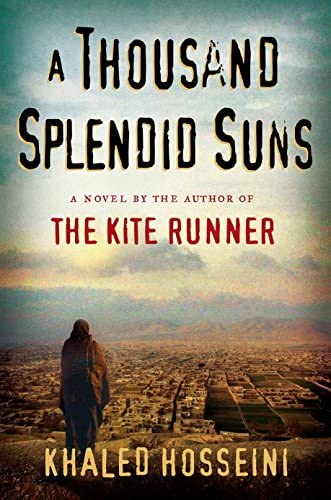
|
| Image from The Heritage Museum, University of Michigan |
By Humaira Ghilzai, Afghanistan Cultural Consultant
The story of Layla and Majnun is a classic Arab love story that has been told and retold for centuries. Based on the real-life love affair between Qays ibn al-Mulawwah and Layla bint Mahdi, the story follows two young lovers who lived during the 7th century in the Arabian Peninsula. Qays falls deeply in love with Layla, but is unable to marry her due to objections of Layla's family. He becomes consumed by his love for Layla and wanders the bazaars singing, dancing and reciting poetry which praises Layla’s beauty. His outward expression of his admiration and love for Layla earns him the nickname Majnun, "madman."
I pass by this town, the town of Layla
And I kiss this wall and that wall
It’s not Love of the town that has enraptured my heart
But of the One who dwells within this town
–Qays ibn al-Mulawwah
One of the most famous retellings of Qays and Layla’s legend is the 12th century poem, Leyli o Majnun, by the revered poet Nizami Ganjavi. This epic poem has been widely translated and has had lasting influence on world culture through literature, plays, films, and even modern pop songs such as Eric Clapton’s song “Layla”, inspired by his love for a woman he could not be with.

|
| Image from The Daily Sabah |
Perhaps Leyli o Majnun even influenced the creation of William Shakepeare’s Romeo and Juliet four centuries after Nizami. Whether it is in the Greek myth of Orpheus and Eurydice or the Chinese legend of the Butterfly Lovers, we are fascinated by forbidden love and unrequited desire and what better place to tell such a story than on a grand opera stage.

|
In the novel A Thousand Splendid Suns, adapted to an opera by composer Sheila Silver, the author Khaled Hosseini compares the relationship between Laila and Tariq to that of Leyli o Majnoon in many subtle and obvious ways.
Both stories center around two young people who are oblivious to the gaze of the world on their love. While Khaled Hosseini shows this when Rashid calls Laila and Tariq, Leyli o Majnun, foreshadowing the fate of their young love, Nizami wrote, “Now Layla and Qays began to notice the pointing fingers, to hear the reproaches, the derision, the whispering behind their back, to see stranger’s eyes, watching, spying, following.”

|
| Images from IMDB and Netflix |
Each story explores themes of forbidden love, unrequited desire, and the struggles of being in love in a society that does not accept or understand it. Like Layla and Majnun, Laila and Tariq are separated by their family's needs and are forced to endure great hardships in their separation. In both stories, the lovers must overcome numerous obstacles, testing their love’s strength against harsh realities of the world around them. Each story explores the enduring power of love and the lengths people will go to in order to be with the person they love.
In A Thousand Splendid Suns there is also love in the form of a mother-daughter relationship between Laila and Mariam. Through this relationship Mariam finds happiness, hope and a purpose in the love she has for Mariam and her children. This female bond gives each woman reason to find joy in the harsh reality of living with their abusive husband and enduring the brutality of the patriarchal society that keeps them imprisoned in their home. In a final act of love Mariam sacrifices her own life to rescue Laila and her children from the clutches of their abusive husband.

|
| Image from The Metropolitan Museum of Art |
Today, in Afghanistan there are many women whose lives and livelihoods parallel Mariam and Laila’s due to the Taliban government edicts designed to erase and silence Afghan women. Whether it is through Landay–a form of oral poetry created and recited by rural women–or formal literature, poetry, filmmaking and journalism, Afghan women are speaking up about the stripping of their hard earned right.
Afghanistan has had many notable female artists such as deceased poets Rabia-i Balkhi, Mehri Herawi, Nadia Anjuuman or writers Homeira Qaderi, Spozhmai Zaryab, Maryam Mahboob, just to name a few. Despite the challenges they have faced, Afghan women continue to create art that highlights their strength and resilience. Some recently released works consist of an anthology of short fiction stories by Afghan women, My Pen is the Wing of a Bird, the documentary “In Her Hands”, directed by Afghan female director Tamana Ayazi and a collection of essays by Afghan female leaders, “We Are Still Here: The Women of Afghanistan”.
About the Author:
Humaira Ghilzai is a writer, speaker, and Afghanistan cultural consultant. She focuses on projects that bring positive social change. She co-founded Afghan Friends Network and instituted the Sister City relationship between Hayward, California and Ghazni, Afghanistan where she has done extensive work to improve education for girls, boys, and women.
Humaira is a sought-after cultural expert who has worked with notable professional theatres authors, playwrights, and artists for the past ten years, utilizing her extensive knowledge of Afghan people, culture, religion, and history to bring authenticity to their creative work relating to Afghanistan and the Islamic world.
You may learn more about Humaira’s work on her website:
www.humairaghilzai.com
Sources for the blog post
“Celebrating Afghan Women Writers”, Aftaab Magazine
Nizami Ganjavi Foundation
Translated story of Layla and Majnun, Heliotricity
A Thousand Splendid Suns opens February 25, 2023, at McCaw Hall. Tickets and info at seattleopera.org/suns.



No comments:
Post a Comment